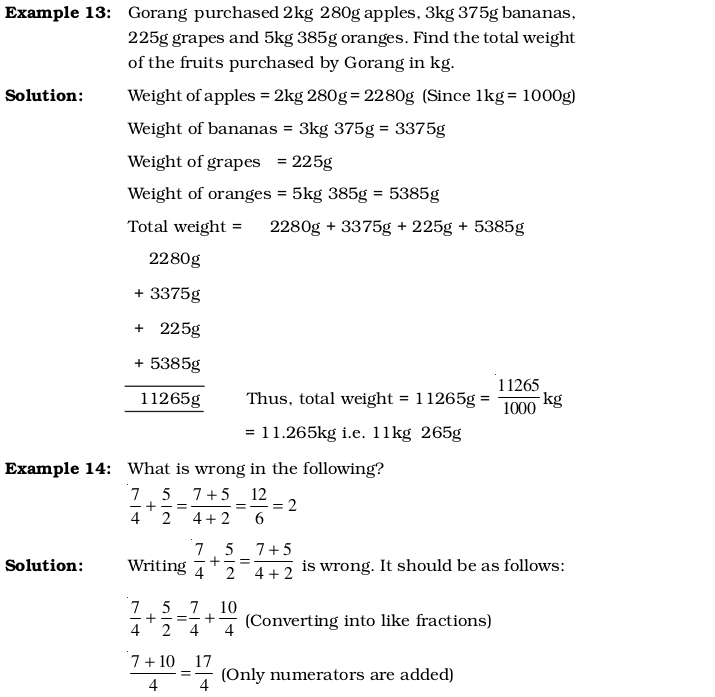Candidates can download NCERT Exemplar Class 6 Maths Unit 4 from this page. The exemplar has been provided by the National Council of Educational Research & Training (NCERT) and the candidates can check it from below for free of cost. It contains objective, very short answer type, short answer type, and long answer type questions. Along with it, the answer for each question has also been provided. From the NCERT Exemplar Class 6 Maths Unit 4, candidates can understand the level and type of questions that are asked in the exam.
NCERT Exemplar Class 6 Maths Unit 4 Fractions and Decimals
NCERT Class 6 Maths Unit 4 is for Fractions and Decimals. The type of questions that will be asked from NCERT Class 6 Maths Unit 4 are displayed in the below provided NCERT Exemplar Class 6 Maths Unit 4. With the help of it, candidates can prepare well for the examination.
Also Check: NCERT Solutions Class 6 Maths
Main Concepts and Results
- A fraction is a number representing a part of a whole. This whole may be a single object or a group of objects.
- A fraction whose numerator is less than the denominator is called a proper fraction, otherwise it is called an improper fraction.
- Numbers of the type
- Numbers of the type
 etc. are called mixed fractions (numbers).
etc. are called mixed fractions (numbers).
- An improper fraction can be converted into a mixed fraction and vice versa.
- Fractions equivalent to a given fraction can be obtained by multiplying or dividing its numerator and denominator by a non- zero number.
- A fraction in which there is no common factor, except 1, in its numerator and denominator is called a fraction in the simplest or lowest form.
- Fractions with same denominators are called like fractions and if the denominators are different, then they are called unlike fractions.
- Fractions can be compared by converting them into like fractions and then arranging them in ascending or descending order.
- Addition (or subtraction) of like fractions can be done by adding (or subtracting) their numerators.
- Addition (or subtraction) of unlike fractions can be done by converting them into like fractions.
- Fractions with denominators 10,100, etc. can be written in a form, using a decimal point, called decimal numbers or decimals.
- Place value of the place immediately after the decimal point (i.e. tenth place) is 1/10 , that of next place (i.e. hundredths place) is 1/100 and so on.
- Fractions can be converted into decimals by writing them in the form with denominators 10,100, and so on. Similarly, decimals can be converted into fractions by removing their decimal points and writing 10,100, etc in the denominators, depending upon the number of decimal places in the decimals.
- Decimal numbers can be compared using the idea of place value and then can be arranged in ascending or descending order.
- Decimals can be added (or subtracted) by writing them with equal number of decimal places.
- Many daily life problems can be solved by converting different units of measurements such as money, length, weight, etc. in the decimal form and then adding (or subtracting) them.
Solved Examples






Multiple Choice Questions

Fill in the Blanks Type Questions

True False Type Questions

Other Important Type Questions

Activities

Click here to download NCERT Exemplar Class 6 Maths Unit 4 Fractions and Decimals.
Answers




To get study material, exam alerts and news, join our Whatsapp Channel.
